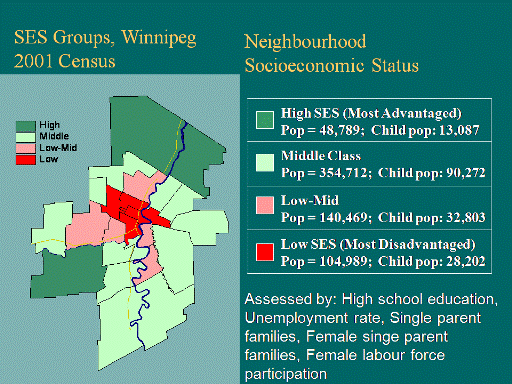| front |1 |2 |3 |4 |5 |6 |7 |8 |9 |10 |11 |12 |13 |14 |15 |16 |17 |18 |19 |20 |review |
 |
A variety of socioeconomic characteristics can be used to describe neighbourhoods – for example, unemployment rates or high school completion rates. At MCHP, researchers have developed an index (the socioeconomic factor index or SEFI) that combines the characteristics that are most strongly related to health outcomes into a single score. These characteristics include unemployment, high school completion, lone-parent households and female participation in the workforce. A SEFI score for each of 25 Winnipeg neighbourhoods was generated using a weighted average of the scores for each dissemination area (~400 people) in the neighbourhood. The scores for these 25 neighbourhoods were then divided into four groups based on how they differed from the average score for all 25 neighbourhoods: low socioeconomic status (SES), or most disadvantaged, low middle SES, middle SES and high SES.
It is important to note that the number of children and the total number of people in these groups are not equal; the middle SES categories for Winnipeg comprise over half of the total child population in these areas. |